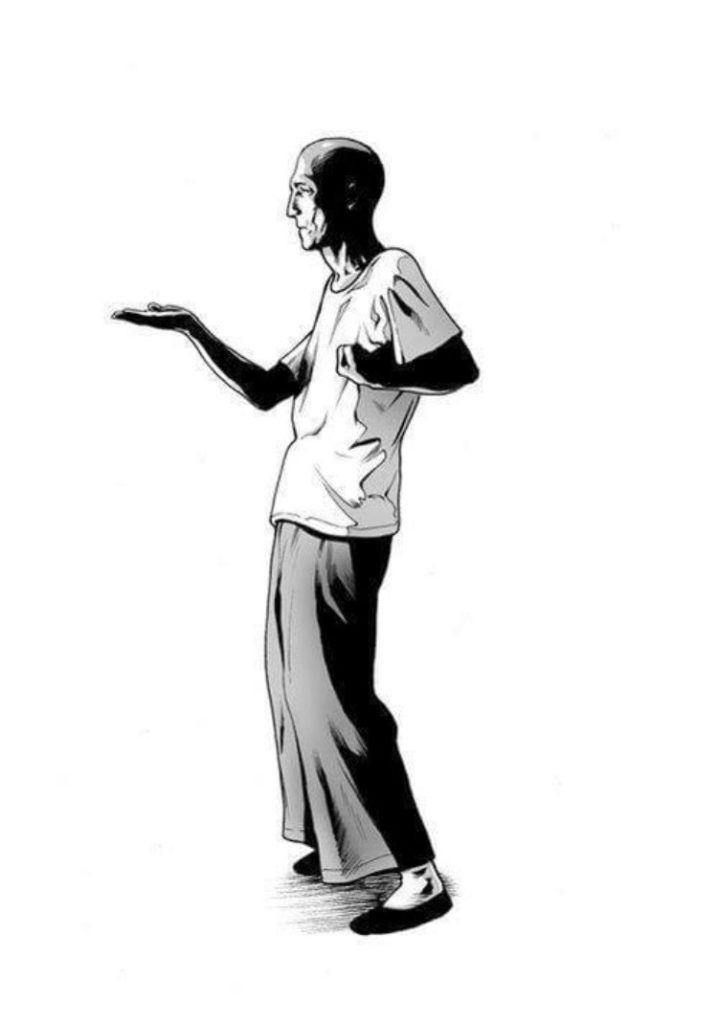It was Bruce Lee who popularised the idea of mixed martial arts. Bruce Lee developed his own style of Jeet Kune Do, based on the many styles he had learned previously including Wing Chun, Taekwondo, Escrima, Judo, Karate, Boxing, and Tai Chi. But Bruce Lee wasn’t the first to think in these terms.

Morihei Ueshiba for example, the founder of Aikido studied various styles such as sumo, various forms of sword fighting and jujitsu styles before founding his own style of Aikido. Ueshiba was the son of a wealthy farming landowner and local politician of samurai descent.

Miyamoto Musashi was a Japanese swordsman born in 1584 and who wrote The Book Of Five Rings – a text on Kenjitsu and the martial arts in general. Musashi was also an expert in throwing weapons, swords and knives. His father, Shinmen Munisai was an accomplished martial artist and master of the sword. One of the principles of the Niten Ichi-ryū (the style which Musashi founded) is that one should be versed in many weaponry skills. Musashi indicates that during battle one should not overuse one weapon—this is as bad as using the weapon poorly, since it becomes easy for an enemy to find a weakness in one’s style after countless uses of the same weapon. These rules are for his students, and are complemented by the 21 “spiritual principles” for all to follow, which are found in the Dokkōdō (Musashi’s final work).

- “Do not think dishonestly.”
- “The Way is in training.”
- “Become acquainted with every art.”
- “Know the Ways of all professions.”
- “Distinguish between gain and loss in worldly matters.”
- “Develop an intuitive judgement and understanding for everything.”
- “Perceive those things which cannot be seen.”
- “Pay attention even to trifles.”
- “Do nothing which is of no use.”
Ninjitsu
Ninjitsu deserves a mention too when talking about mixed martial arts. Ninjutsu was developed as a collection of fundamental survivalist techniques in the warring state of feudal Japan. Original ninjutsu consisted of various espionage tactics and it was taught to shinobi/spies/”ninjas” during the times of medieval Japan. The shinobi trained separate disciplines in some traditional Japanese schools, which integrated study of actual martial arts (taijutsu) along with shurikenjutsu, kenjutsu, sōjutsu, bōjutsu and others. Grandmaster Masaaki Hatsumi is the head of the Bujinkan style of ninjitus/taijutsu whose syllabus covers 9 different arts. Hatsumi studied everything he could, Judo, Kendo, Karate, Aikido, Okinowan Karate (Zen-Bei Butokukai) and Jukendo (rifle and bayonet combat). I trained a little with a Ninjitsu instructor Trevor Robinson who was one of Hatsumi’s students (and a 5th Dan). He taught students to “wrestle a boxer and box a wrestler” switching styles where necessary. Watch a video of his here.

Mixed Martial Arts
Martial artists are often a product of their environment and the times in which they lived. Swordsmanship was necessary in feudal times but is almost forgotten today. Guns have taken the place of the sword and martial arts is less important in modern day warfare.
Mixed martial arts is the result of the modern times and even many traditional martial arts have been transformed into sports. The UFC has given rise to the growth of MMA particularly.
The Ultimate Fighting Championship (UFC) is an American mixed martial arts promotion company based in Las Vegas, Nevada. The UFC was founded by businessman Art Davie and Brazilian martial artist Rorion Gracie who studied Brazilian Jujitsu. The style shone out in the UFC and consistently won in contests. It is based on grappling, ground fighting and submission holds; perfect for the sports arena and of course cage fighting. You can see why so many are flocking to this style. How would the style hold up against a standing fight or against multiple attackers though, I wonder? Is it useful in a different context? A good book on this subject is Meditations On Violence which compares the martial arts styles against real world violence. It clearly shows (in a chart) the effectiveness of each martial art individually based on its parameters of usefulness and range.

Where are the traditional martial arts systems when it comes to MMA and sport fighting? Where is Aikido, where is Ninjitsu and Wing Chun, for example? Do they perform poorly in a sports setting? Why do they not excel or show up in these events?
Mixed Martial Arts & Sport
One of the main reasons so many people are interested in mixed martial arts is because of the UFC. Sport fighting however has many rules which means some traditional styles will lose their effectiveness given restrictive parameters. While sport fighting does determine a style’s usefulness to a degree, there’s also a limit to what can happen in a ring. Eye gouges, groin attacks, knee kicks and the like are out completely if you want to create a sport from fighting. But those tactics can be vital in a life threatening situation. The psychology is different too and in a ring both practitioners know what they’re getting. There can be no surprise attacks/counter attacks in a ring!
A sport fight is different to an actual fight, where others can wade in (in the street), this won’t happen in a sports contest; it’s controlled.
Traditional Styles VS MMA
Some martial artists simply don’t have an interest in joining in a sport version of their art, or of competing. Those who gravitate towards the more “traditional” styles of martial art are often doing so because they don’t want to fight. They hate fighting in fact! A fight is always the last thing on their mind. But should something happen, they want to arm themselves for the worst case scenario – for self defence.

While training in the ring is useful in terms of putting your style to the test, for many it also loses it’s ethos on the way there. Martial arts have a different meaning for everyone, and not all are seeking the same experience. Unless your martial arts training is enjoyable and meaningful to you, you will be unlikely to train at it for very long. If that’s the case you won’t get very good. But training multiple styles means you dilute your training time and your depth of understanding in each.
The “Best”
So what’s the answer? At one time (in my younger days) I was training in three different martial arts at once: Ninjitsu, Aikido and Wing Chun. (I have also trained many other styles such as Iaido, Taekwondo, Judo, Kali and Karate.) Ultimately I came to the decision that I needed to focus on just one to learn with any depth (“From one thing, know ten thousand things.” ― Miyamoto Musashi ); hence why I run a Wing Chun school today. As I feel I picked Wing Chun because it gave me everything I wanted from a martial art. I could enjoy the process of training, spend time with fellow students and improve injury free. This becomes particularly important as you get older! Most people have jobs to hold down and won’t become ultimate fighting champions, (or ever get into a real fight). They don’t want to pick up regular injuries which can be a problem in some styles and classes.
Wing Chun is also a style you can practice into old age.
All martial artists love their style, and many think that there style is the “best”. But each has something different to offer and each has a specific parameter of usefulness; the “best” doesn’t really exist and if you enjoy your training, that’s what matters! Train hard and practice every day. You don’t stop practicing when you get old, you get old when you stop practicing!



